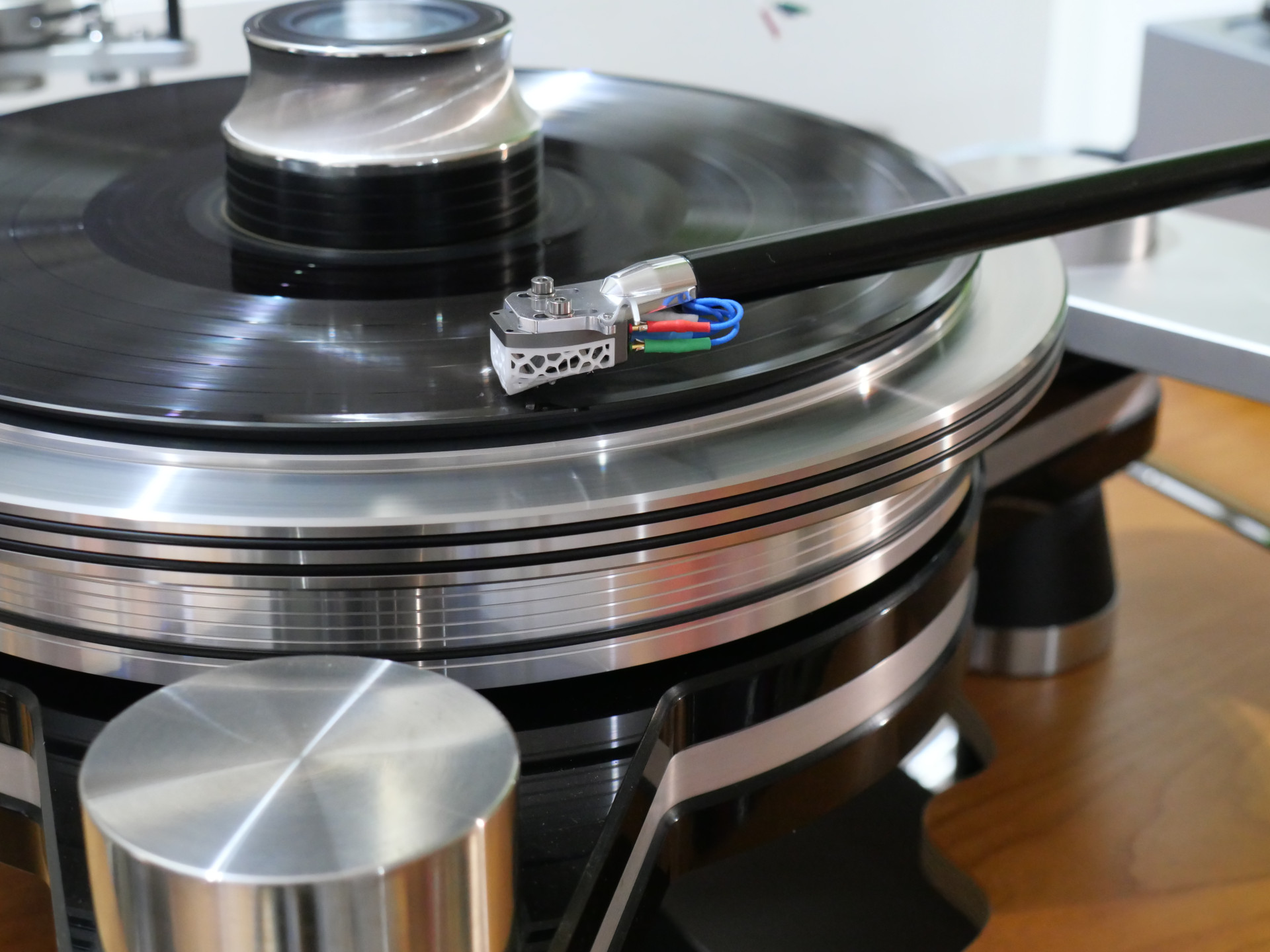Swapping cartridges to the X-quisite Voro (or back to the Etna) is also revealing – both of the arm’s nature and how easy it is to work with. Despite a significant difference in the height of the two cartridges and enough of a weight difference to make a shift of the main counterweight essential, switching between the two was surprisingly straight-forward and pain free, testimony to the ease with which the arm can be adjusted and just how easily it lets you hear the results of those adjustments. That even top-to-bottom balance and clarity underlines the difference between the two pick-ups just as easily. Like its bigger brother, the X-quisite ST, the Voro is all about nuance, delicacy, texture and harmonic accuracy. Play Woodland Studios and the character and diction of the voices is even more natural, individual and better separated. The guitar strings’ harmonics, the shape of phrases and individual notes, as well as the gaps between them are all rendered with that same explicit but unforced clarity. The arm allows the cartridge to play to its strengths, while also showing its essential character. This is not a ‘big bang and fireworks’ transducer. It doesn’t bulldoze the music or the listener, or throw its weight around. Its bottom end is certainly tuneful and precise, both in terms of pitch and placement, but it is slightly light in terms of weight. While the Voro can certainly match or better the micro-dynamic discrimination and shadings of the Etna, the Lyra cartridge offers wider ranging and more emphatic dynamics.
Why the detailed discussion of the merits of two distinctly different cartridges in what is after all, a tonearm review? Because listening to different cartridges in this arm reveals a lot about the tonearm itself. While the arm definitely allows each cartridge to be itself, a huge part of that is just how little the arm intrudes on the process of replay. That doesn’t mean that the arm is devoid of character, but that its character is subtractive rather than additive.

All that light-touch clarity and unfettered rhythmic and dynamic response certainly speaks volumes about the absence of stored or reflected energy. But it also suggests a deep bass that treads on the lighter side when it comes to weight, one that’s quick and articulate but lacks the sheer wallop that’s delivered by an arm like the 4Point 14. Playing albums like the largely acoustic Woodland Studios, you’d be hard pressed to notice it, move up in weight and scale and it becomes more apparent.
Playing the Boult /LPO/LPC recording of RVW’s A Sea Symphony (EMI ASD 2439-40/SLS 780, using the Etna) the soundstage is broad and deep, with the choir ranked above and behind the orchestra, the soloists ‘parachuted’ into the heart of the acoustic. The expansive spatial coherence certainly demonstrates the depth and linearity of the arm’s bass extension. However, whilst the timp rolls that punctuate the first movement are perfectly located (stage left) and tonally and texturally separated from the centrally placed basses, the reproduction is all about the mallet strikes and skins, rather than the body and weight of the drums themselves. That’s the reverse of the normal situation, where so many turntable and arm pairings deliver (or overdo) the rumbling judder of a timp roll at the expense of the impact of the mallets and the texture of the taught membranes.

